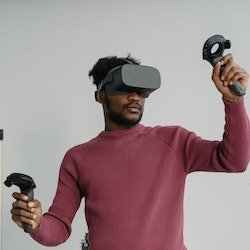Virtual Reality (VR) has been touted as the next big thing in technology, promising to revolutionize the way we interact with digital content. However, despite its potential, widespread adoption of VR has been slower than anticipated. In this blog post, we will explore some of the barriers to VR adoption and how they can be overcome.
Cost
One of the biggest barriers to VR adoption is cost. High-end VR headsets can be expensive, and many consumers are hesitant to invest in new technology without a clear understanding of its benefits. To overcome this barrier, manufacturers could explore more affordable options, such as standalone headsets or rental programs, which would allow users to try VR without committing to a significant investment.
Complexity
Another barrier to VR adoption is complexity. Setting up a VR system can be challenging, requiring a certain level of technical expertise. Additionally, the need for specialized hardware and software can be daunting for non-technical users. To overcome this barrier, manufacturers could focus on developing more user-friendly systems that are easier to set up and use, without sacrificing functionality.
Content
A lack of compelling content is another barrier to VR adoption. Without engaging and immersive experiences, users may be hesitant to invest in VR technology. To address this, manufacturers could partner with content creators to develop high-quality VR experiences, ranging from gaming to education to social experiences.
Comfort
Comfort is another important factor in VR adoption. Some users may experience discomfort or motion sickness when using VR headsets for extended periods. To overcome this barrier, manufacturers could focus on improving the ergonomics and design of VR headsets, as well as developing new technologies that minimize motion sickness.
Accessibility
Finally, accessibility is a barrier to VR adoption. Not everyone has access to the necessary hardware or space to use VR, which can limit its reach. To address this, manufacturers could focus on developing more compact and portable VR systems, as well as exploring alternative use cases for VR that don’t require a large physical space.
In conclusion, there are several barriers to VR adoption, including cost, complexity, content, comfort, and accessibility. However, by addressing these challenges and focusing on user needs and preferences, manufacturers can help to overcome these barriers and make VR more accessible and appealing to a broader audience. As VR technology continues to evolve and improve, we can expect to see even more innovative and exciting use cases for this promising technology




Leave a Reply